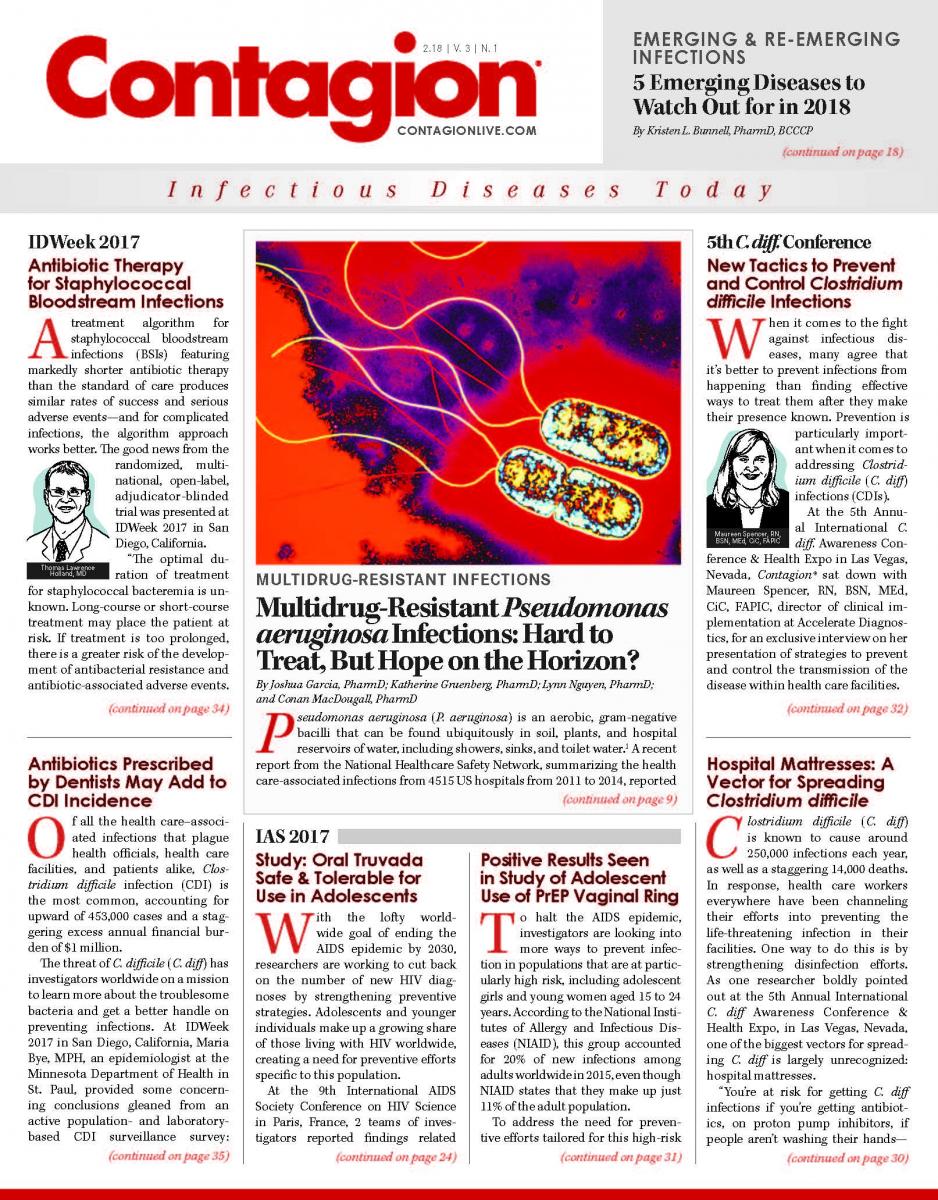Short-Course Antibiotic Therapy for Enterobacteriaceae Bloodstream Infections
Poignant study adds to the growing body of literature that points toward individualizing duration of therapy for each patient.
The duration of antibiotic therapy has garnered attention recently, particularly after the aptly titled BMJ article, “The Antibiotic Course Has Had Its Day,” by Llewelyn and colleagues was published.1 Although the media interpreted the article to mean that patients did not have to finish their prescribed course of antibiotics, the true message of the paper was that duration of therapy for many common infections is not rigorously studied and individual patient responses should guide their unique durations. Over the past few years, more studies have challenged the concept that longer infection treatment durations are better. Some more recent evidence supports the use of 4-day courses for source-controlled intra-abdominal infections2 and 7 days for hospital- and ventilator-associated pneumonias.3 Until recently, there was no good data to determine whether shorter courses of therapy could be used for bloodstream infections as well.
Chotiprasitsakul and colleagues retrospectively identified 4967 unique patients 18 years or older with Enterobacteriaceae bloodstream infections admitted to 1 of 3 hospitals.4 Following strict exclusion criteria, patients were stratified as receiving short-course treatment of 6 to 10 days (n = 385) or prolonged-course treatment of 11 to 16 days (n = 1384). Patients additionally underwent propensity matching, for a final cohort of 770 patients. The primary outcome was 30-day posttreatment mortality. Secondary outcomes included recurrent bloodstream infections with the same organism, Clostridium difficile (C. diff) infection, and emergence of multidrug-resistant Gram-negative colonization or infection. Patients were approximately 60 years of age, mostly black or white, and evenly split between male and female. The source of bloodstream infection was from a urinary source in 35% to 40% of patients. Escherichia coli, Klebsiella pneumoniae, and Enterobacter species were the most common organisms isolated. Adequate source control was achieved in more than 97% of patients.
A short course of antibiotic therapy was not associated with an increased risk of 30-day mortality (9.6% vs 10.1%, respectively; HR, 1.12; 95% CI, 0.70- 1.80). Additionally, no reduction in mortality was seen for each additional day of antibiotics administered. A urinary source of the bloodstream infection was found to be protective, while a higher Pitt bacteremia score and end-stage liver disease were found to be associated with higher 30-day mortality in a multivariate model. There were no differences found in terms of infection relapse, C. diff infection, or isolation of multidrug-resistant organisms. The authors concluded that in uncomplicated (aka source controlled) Enterobacteriaceae bloodstream infections, short courses of 6 to 10 days of antibiotic therapy resulted in rates of 30-day mortality similar to those seen with prolonged courses.
This article adds to the growing body of literature that points toward individualizing duration of therapy for each patient. Prompt and adequate source control is vital to the success of any therapy. Once this is achieved, therapies can be shortened from what is traditionally thought. In light of the many critical ongoing antibiotic drug shortages, reducing the length of therapy is one method of preserving our armamentarium of medications for those who truly require them.
Dr. Mahoney is the clinical pharmacy coordinator of infectious diseases at Beth Israel Deaconess Medical Center in Boston, Massachusetts. She received a PharmD from Massachusetts College of Pharmacy and Health Sciences in Boston, is board-certified in pharmacotherapy, and holds additional qualifications in Infectious Diseases. She is an active member of SIDP.
References:
1. Llewelyn MJ, Fitzpatrick JM, Darwin E, et al. The antibiotic course has had its day. BMJ 2017;358:j3418. doi: 10.1136/bmj.j3418.
2. Sawyer RG, Claridge JA, Nathens AB, et al. Trial of short-course antimicrobial therapy for intraabdominal infection. N Engl J Med. 2015;372(21):1996-2005. doi: 10.1056/NEJMoa1411162.
3. Kalil AC, Metersky ML, Klompas M, et al. Management of adults with hospital-acquired and ventilator-associated pneumonia: 2016 clinical practice guidelines by the Infectious Diseases Society of America and the American Thoracic Society. Clin Infect Dis. 2016;63(5):e61-e111. doi:10.1093/cid/ciw353.
4. Chotiprasitsakul D, Han JH, Cosgrove SE, et al; Antibacterial Resistance Leadership Group. Comparing the outcomes of adults with Enterobacteriaceae bacteremia receiving short-course versus prolonged-course antibiotic therapy in a multicenter, propensity score-matched cohort. Clin Infect Dis. 2017;66(2):172-177. doi: 10.1093/cid/cix767

